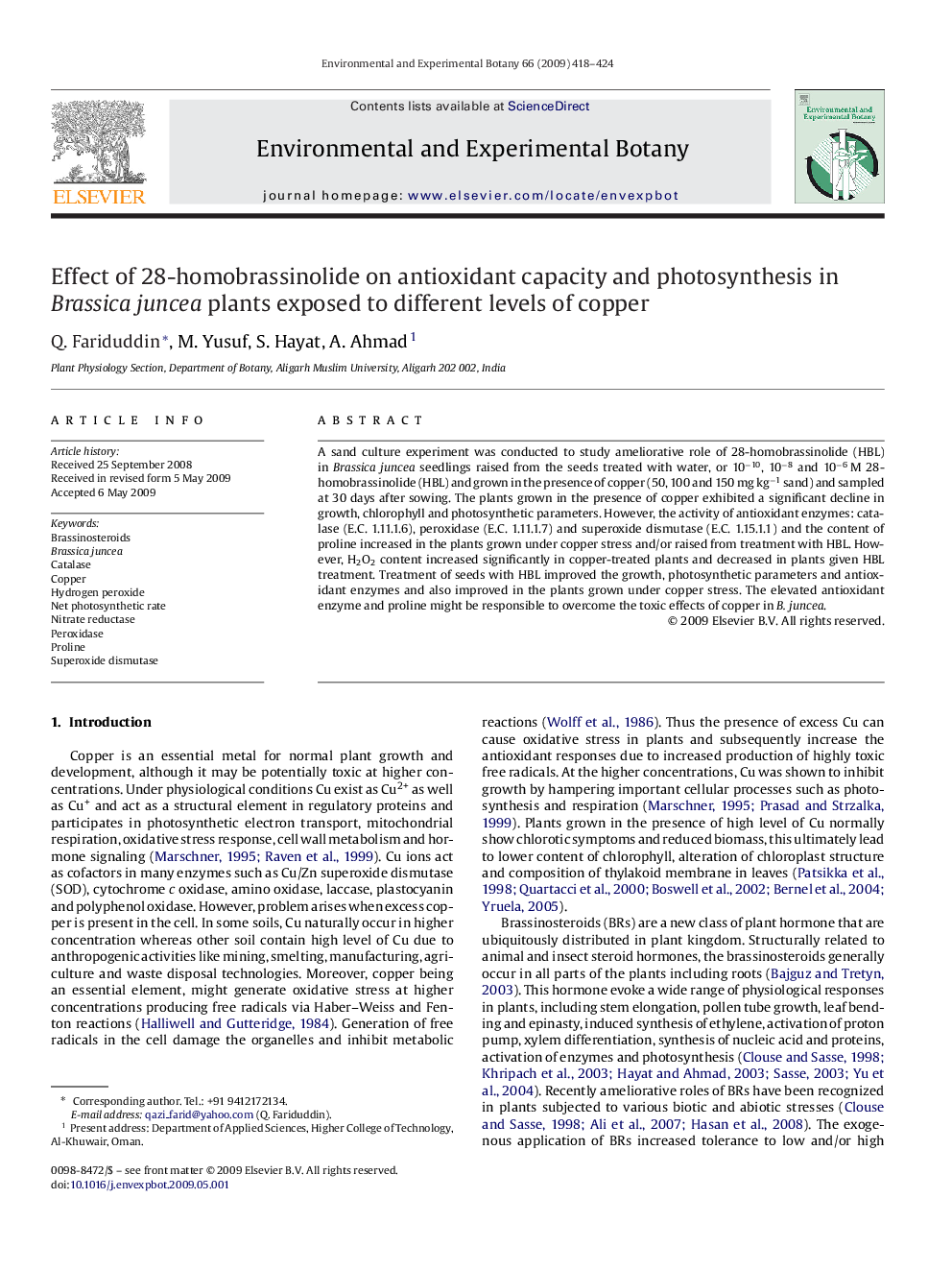| Article ID | Journal | Published Year | Pages | File Type |
|---|---|---|---|---|
| 4555193 | Environmental and Experimental Botany | 2009 | 7 Pages |
A sand culture experiment was conducted to study ameliorative role of 28-homobrassinolide (HBL) in Brassica juncea seedlings raised from the seeds treated with water, or 10−10, 10−8 and 10−6 M 28-homobrassinolide (HBL) and grown in the presence of copper (50, 100 and 150 mg kg−1 sand) and sampled at 30 days after sowing. The plants grown in the presence of copper exhibited a significant decline in growth, chlorophyll and photosynthetic parameters. However, the activity of antioxidant enzymes: catalase (E.C. 1.11.1.6), peroxidase (E.C. 1.11.1.7) and superoxide dismutase (E.C. 1.15.1.1) and the content of proline increased in the plants grown under copper stress and/or raised from treatment with HBL. However, H2O2 content increased significantly in copper-treated plants and decreased in plants given HBL treatment. Treatment of seeds with HBL improved the growth, photosynthetic parameters and antioxidant enzymes and also improved in the plants grown under copper stress. The elevated antioxidant enzyme and proline might be responsible to overcome the toxic effects of copper in B. juncea.
